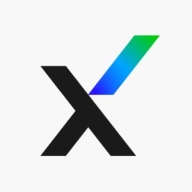

Trellix Advanced Threat Defense and Microsoft Defender for Endpoint compete in the cybersecurity market, focusing on defending against advanced cyber threats. Data analysis shows Microsoft Defender for Endpoint has an upper hand due to its broad feature set, despite Trellix offering advantageous pricing and support.
Features: Trellix Advanced Threat Defense excels in real-time sophisticated threat detection, automated incident responses, and strong threat analysis capabilities. Microsoft Defender for Endpoint stands out with integrated threat intelligence, multi-platform support, and high-quality threat analytics.
Room for Improvement: Trellix could enhance user interface intuitiveness, expand integration capabilities, and optimize threat intelligence updates. Microsoft Defender for Endpoint could improve its initial cost structure, enhance feature customization, and streamline cross-platform interoperability.
Ease of Deployment and Customer Service: Trellix Advanced Threat Defense offers a streamlined deployment process with rich support options, although it can be complex due to customization needs. Microsoft Defender for Endpoint benefits from easy integration within Microsoft environments, backed by comprehensive support documents, making its deployment more straightforward.
Pricing and ROI: Trellix Advanced Threat Defense provides competitive pricing and substantial ROI for budget-conscious organizations. Microsoft Defender for Endpoint, while carrying a higher initial cost, justifies this through its extensive features and long-term integration benefits, making the investment worthwhile in the long run.
| Product | Market Share (%) |
|---|---|
| Microsoft Defender for Endpoint | 7.5% |
| Trellix Advanced Threat Defense | 2.2% |
| Other | 90.3% |

| Company Size | Count |
|---|---|
| Small Business | 80 |
| Midsize Enterprise | 40 |
| Large Enterprise | 92 |
| Company Size | Count |
|---|---|
| Small Business | 3 |
| Midsize Enterprise | 4 |
| Large Enterprise | 5 |
Microsoft Defender for Endpoint is a comprehensive security solution that provides advanced threat protection for organizations. It offers real-time protection against various types of cyber threats, including malware, viruses, ransomware, and phishing attacks.
With its powerful machine-learning capabilities, it can detect and block sophisticated attacks before they can cause any harm. The solution also includes endpoint detection and response (EDR) capabilities, allowing organizations to quickly investigate and respond to security incidents. It provides detailed insights into the attack timeline, enabling security teams to understand the scope and impact of an incident.
Microsoft Defender for Endpoint also offers proactive threat hunting, allowing organizations to proactively search for and identify potential threats within their network. It integrates seamlessly with other Microsoft security solutions, such as Microsoft Defender XDR, to provide a unified and holistic security approach. With its centralized management console, organizations can easily deploy, configure, and monitor the security solution across their entire network.
Microsoft Defender for Endpoint is a robust and scalable security solution that helps organizations protect their endpoints and data from evolving cyber threats.
Uncover Hidden Threats
Combine in-depth static code analysis, dynamic analysis (malware sandboxing), and machine learning to increase zero-day threat and ransomware detection.
Threat Intelligence Sharing
Immediately share threat intelligence across your entire infrastructure—including multi-vendor ecosystems—to reduce time from threat encounter to containment.
Enable Investigation
Validate threats and access critical indicators of compromise (IoCs) needed for investigation and threat hunting.
We monitor all Advanced Threat Protection (ATP) reviews to prevent fraudulent reviews and keep review quality high. We do not post reviews by company employees or direct competitors. We validate each review for authenticity via cross-reference with LinkedIn, and personal follow-up with the reviewer when necessary.